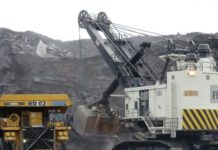
[miningmx.com] — Copper hit a record high in London on Tuesday after the New Year break, chasing a rally in New York which touched an all-time peak in the previous session, buoyed by positive manufacturing data from around the
world.
London Metal Exchange benchmark copper for delivery in three months rallied to $9,728 a tonne, up from Friday’s evaluation of $9,600.
By early morning, LME copper stood $9,680 and third month copper on Comex stood at 443.50 cents/lb, down 2.25 cents and off Monday’s peak.
“In the copper market, we had expected a deficit in 2011, but we are seeing events that are causing analysts to revise that wider,” said Ben Westmore, commodities economist at National Australia Bank.
“We had expected lower ore grades. But we have since had issues at Collahuasi’s shipments, problems with Peru’s miners getting permits, the dominant position and the probable launch of copper-backed exchange traded funds. People are wondering
where all the copper will come from.”
Manufacturing in the United States and Europe accelerated in December, while growth in China and India slowed to more sustainable levels in another boost for the global economic outlook.
Purchasing manager indexes showed manufacturing growth quickened in Europe and the United States, supported by surging new orders, while robust but slowing growth in India and China eased concerns about inflation and tighter monetary
policy.
Investors moved into riskier, more economically sensitive assets like copper on expectations of sustained demand by the top metals consumer, China, and global equity prices surged, with the Nasdaq 100 hitting a 10-year high.
Lead prices rose to a six-week high of $2,581.
Prices saw some support from news that Canadian-listed miner Ivernia Inc had been ordered to halt lead shipments by the Western Australian government from the firm’s Magellan mine after airborne lead was detected in shipping containers.
In a statement, Ivernia said, there was no public risk.
“Airborne lead levels in sealed containers are very low and are well below occupational health levels established by the Australian National Occupational Safety and Health Commission.”










